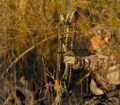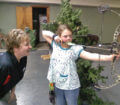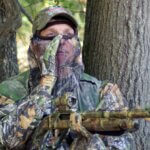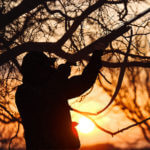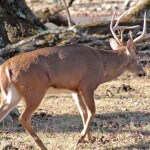Editor’s Note: With the start of bowhunting season only a couple of months away, you need to start practicing now. Frank Pearson of St. David, Arizona, owner and operator of the Frank Pearson School of Archery (www.frankpearson.com) and nationally-known archery coach, has seen the evolution of the bow from the longbow when he first started shooting and competed with up to today’s modern bows and most-technical bowhunting equipment. If anyone knows archery, and how to help an archer shoot better, you can rely on Pearson. This week Frank will give us practical tips on how to shoot better, whether you are a tournament archer or a bowhunter.
 Question: What is another often-overlooked aspect of shooting the bow that creates problems for tournament archers and bowhunters?
Question: What is another often-overlooked aspect of shooting the bow that creates problems for tournament archers and bowhunters?
Pearson: Not having their bows tuned. One of the first things I teach at my archery school is how to correctly tune a bow.
Question: What is the most-important part of tuning a bow?
Pearson: All the points of tuning a bow are important. The most-common problem I see is not having the cams on your bow in time. The second-most important thing is that a compound bow is much like a pair of shoes. The bow has to be set up to fit the shooter. If you buy a pair of shoes that don’t fit, you’re going to consistently have problems with those shoes, because they don’t fit you. The same is true of a bow. Each bow has to be set-up to fit each individual shooter. A lot of people think that they need to shoot an extra-long draw length, because they believe that extra-long draw length delivers more speed to the arrow. But extra-long won’t deliver the accuracy that you need, if the bow doesn’t fit you. The way your bow fits you plays a major role in how accurately you shoot, just like the right-size shoe is the deciding factor in how comfortably you walk and stand. If your bow doesn’t fit you right, there’s no way you can shoot consistently and accurately.
Another factor that plays a major role in shooting accurately is the weight of the bow that you choose to shoot. If the bow is too heavy for you to draw comfortably, you may not shoot accurately, and there’s a good chance you’ll hurt yourself. I believe that any hunter who’s only going to hunt with a bow about 3 months out of the year doesn’t need a bow with a heavier draw weight than 60 pounds. There is no big-game animal in the United States that you can’t take with a 60-pound bow. Ten years ago you probably needed a 75-pound bow to get the same type of performance that you can produce with a 60-pound bow today. The reason that this statement is true is the technology that is being used today in bow designs has increased the performance of the bows that much in 10 years.
 Question: What’s the relationship of a peep sight to a bow sight?
Question: What’s the relationship of a peep sight to a bow sight?
Pearson: You have to remember that a peep sight isn’t just a device to enable the archer to look through the string on the bow. Instead, it functions exactly like the rear sight of a rifle. To shoot accurately, you have to make sure that the front pin that you’re aiming with is lined-up exactly in the center of the peep sight. Many bowhunters and tournament archers look through the hole in their peep sight. When they see the pin, they want to use it to aim with in that peep sight and release the arrow. Many times, a shooter doesn’t look to see if that front sight is lined-up perfectly in the center of the peep sight. The front sight may appear to be at the top of the peep sight, at the bottom of the peep sight or more to the left or the right of the peep sight. Often shooters don’t take the time required to make sure that that front sight is in the very center of the peep sight.
For instance, if the front sight is at the top of your peep sight instead of dead center, you’ll miss as badly as you will miss if the front sight on your rifle is at the very top of the rifle sight. Many bowhunters, when they miss the buck or the elk of a lifetime, don’t even see it through the peep sight. Instead they see that big animal and put the pin they want to use on the spot they want to hit and forget about looking-through the peep sight. So, even though they put the pin on the spot they want to hit, if they forget to look through the peep sight, they’ll miss the animal. At the Frank Pearson School of Archery, I drill into my students the idea of having a shot routine, where you always take the shot by the numbers you’ve written out and walk you through making the perfect shot. Lining-up the front sight and the peep sight is one of the steps of your shot routine. Then, regardless of the target or the distance, you have the best chance of making the most-accurate shot you can make.
 Here’s a drill you can try at home. Aim at the center ring of the target you’re going to shoot, put the front sight at the very top of your peep sight, and then release the arrow. With your next arrow, aim at the center of the target, put the front sight at the bottom of your peep sight and release the arrow. Follow the same drill, by putting the front sight on the left and then the right side of your peep sight. Then with your final shot, put the front sight dead center on your peep sight, and release the arrow. If you repeat this same drill at different distances, you’ll quickly see and understand how important lining-up the front sight in the center of the peep sight every time you take a shot is and how that process increases your accuracy.
Here’s a drill you can try at home. Aim at the center ring of the target you’re going to shoot, put the front sight at the very top of your peep sight, and then release the arrow. With your next arrow, aim at the center of the target, put the front sight at the bottom of your peep sight and release the arrow. Follow the same drill, by putting the front sight on the left and then the right side of your peep sight. Then with your final shot, put the front sight dead center on your peep sight, and release the arrow. If you repeat this same drill at different distances, you’ll quickly see and understand how important lining-up the front sight in the center of the peep sight every time you take a shot is and how that process increases your accuracy.
To learn much more about bowhunting, get John E. Phillips’ eBooks, print books and audiobooks by going to https://johninthewild.com/books.

